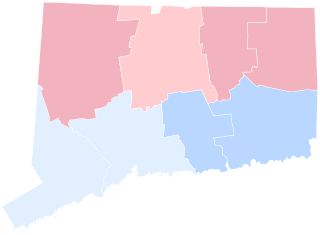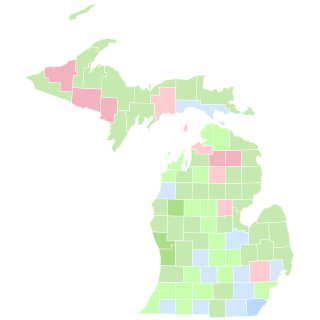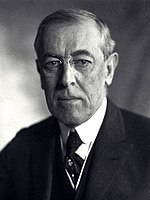
The 1912 United States presidential election in Pennsylvania took place on November 5, 1912 as part of the 1912 United States presidential election. This was the first time that Arizona and New Mexico took part in a presidential election having been admitted to the Union earlier in the year. Voters chose 38 representatives, or electors to the Electoral College, who voted for president and vice president.

The 1912 United States presidential election in Montana took place on November 5, 1912 as part of the 1912 United States presidential election. Voters chose four representatives, or electors to the Electoral College, who voted for president and vice president.

The 1912 United States presidential election in New Mexico took place on November 5, 1912, and all contemporary forty-eight states participated as part of the 1912 United States presidential election. Voters chose three electors to represent them in the Electoral College, which voted for President and Vice President.

The 1912 United States presidential election in New York took place on November 5, 1912. All contemporary 48 states were part of the 1912 United States presidential election. Voters chose 45 electors to the Electoral College, which selected the president and vice president.

The 1924 United States presidential election in Massachusetts took place on November 4, 1924, as part of the 1924 United States presidential election, which was held throughout all contemporary 48 states. Voters chose 18 representatives, or electors to the Electoral College, who voted for president and vice president.

The 1916 United States presidential election in Massachusetts took place on November 7, 1916, as part of the 1916 United States presidential election, which was held throughout all contemporary 48 states. Voters chose 18 representatives, or electors to the Electoral College, who voted for president and vice president.

The 1912 United States presidential election in Massachusetts took place on November 5, 1912, as part of the 1912 United States presidential election, which was held throughout all contemporary 48 states. Voters chose 18 representatives, or electors to the Electoral College, who voted for president and vice president.

The 1916 United States presidential election in Vermont took place on November 7, 1916, as part of the 1916 United States presidential election which was held throughout all contemporary 48 states. Voters chose four representatives, or electors to the Electoral College, who voted for president and vice president.

The 1912 United States presidential election in Vermont took place on November 5, 1912, as part of the 1912 United States presidential election which was held throughout all contemporary 48 states. Voters chose four representatives, or electors to the Electoral College, who voted for president and vice president.

The 1912 United States presidential election in Virginia took place on November 5, 1912. Voters chose 12 representatives, or electors to the Electoral College, who voted for president and vice president.

The 1912 United States presidential election in Minnesota took place on November 5, 1912 as part of the 1912 United States presidential election. Minnesota voters chose 12 electors to the Electoral College, which selected the president and vice president.

The 1920 United States presidential election in Utah took place on November 2, 1920. All contemporary forty-eight states took part as part of the 1920 United States presidential election, and the state voters selected four electors to the Electoral College, who voted for president and vice president. This was the first presidential election to feature as a distinct voting unit Daggett County, the newest and least populous of Utah's current twenty-nine counties.

The 1912 United States presidential election in Connecticut took place on November 5, 1912, as part of the 1912 United States presidential election which was held throughout all contemporary 48 states. Voters chose seven representatives, or electors to the Electoral College, who voted for president and vice president.

The 1912 United States presidential election in Maine took place on November 5, 1912, as part of the 1912 United States presidential election which was held throughout all contemporary 48 states. Voters chose six representatives, or electors to the Electoral College, who voted for president and vice president. Maine was won by the Democratic nominees, New Jersey Governor Woodrow Wilson and Indiana Governor Thomas R. Marshall. Wilson and Marshall defeated incumbent President William Howard Taft, and his running mate Vice President James S. Sherman and Progressive Party candidates, former President Theodore Roosevelt and his running mate California Governor Hiram Johnson.

The 1912 United States presidential election in Utah was held on November 5, 1912 as part of the 1912 United States presidential election. State voters chose four representatives, or electors to the Electoral College, who voted for president and vice president.

The 1912 United States presidential election in West Virginia took place on November 5, 1912, as part of the 1912 United States presidential election. West Virginia voters chose eight representatives, or electors, to the Electoral College, who voted for president and vice president.

The 1912 United States presidential election in South Dakota took place on November 5, 1912, as part of the 1912 United States presidential election. Voters chose five representatives, or electors, to the Electoral College, who voted for president and vice president.

The 1912 United States presidential election in Michigan took place on November 5, 1912, as part of the 1912 United States presidential election. Voters chose 15 representatives, or electors, to the Electoral College, who voted for president and vice president.

The 1912 United States presidential election in Kansas took place on November 5, 1912, as part of the 1912 United States presidential election. Voters chose ten representatives, or electors, to the Electoral College, who voted for president and vice president.

The 1916 United States presidential election in Wyoming took place on November 7, 1916, as part of the 1916 United States presidential election. State voters chose three representatives, or electors, to the Electoral College, who voted for president and vice president.
























